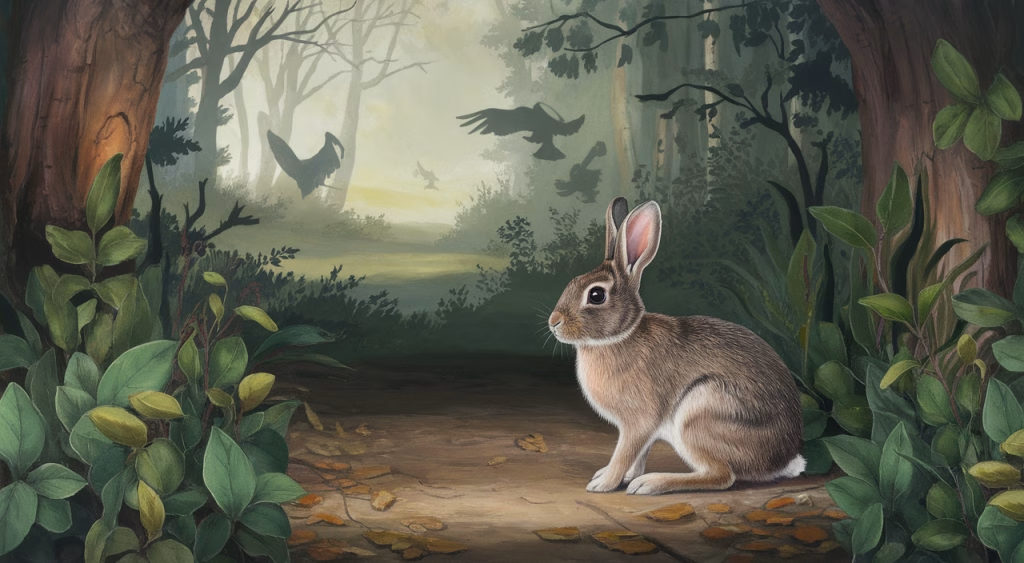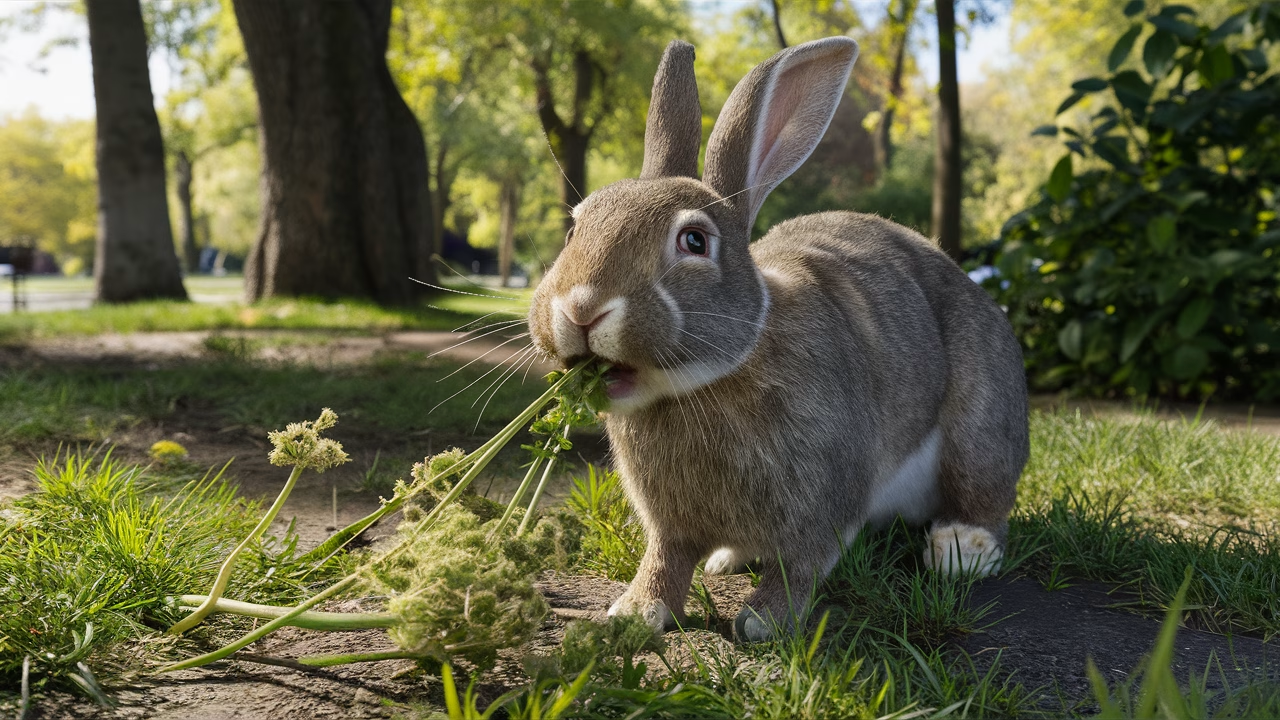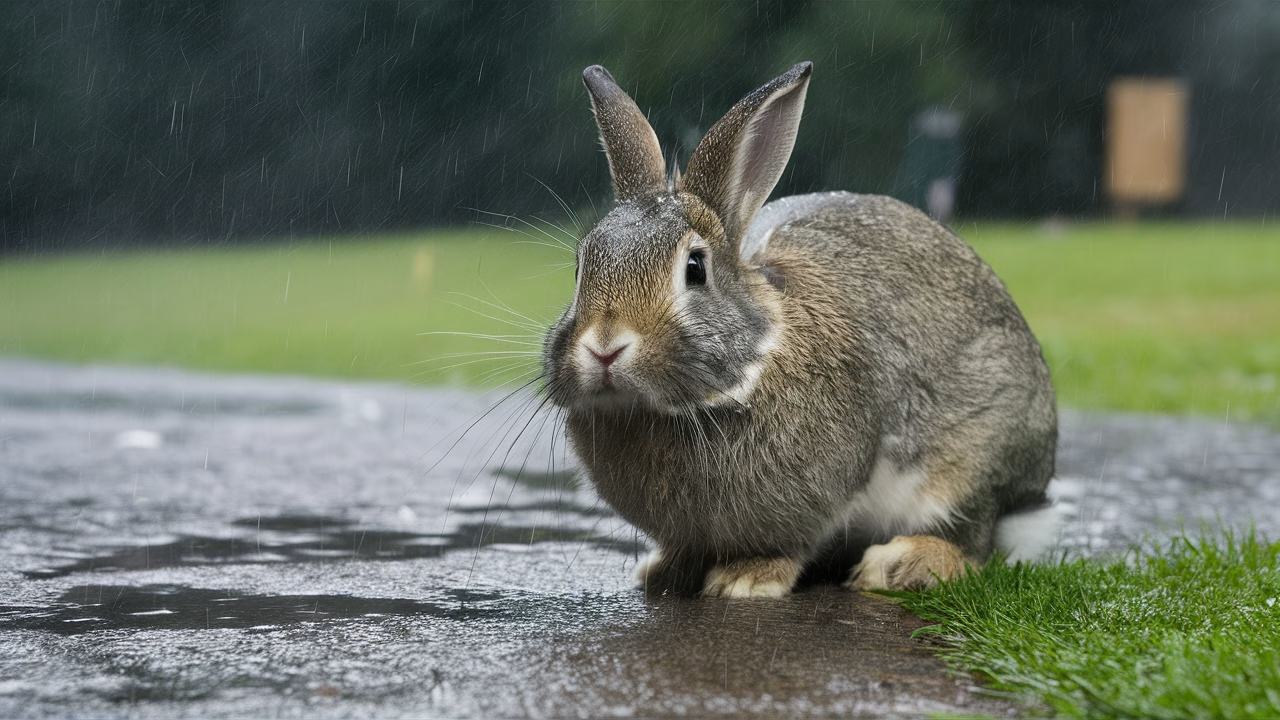Why Is Releasing Domestic Rabbits into the Wild Dangerous?
When you release domestic rabbits in the wild, you’re essentially signing their death warrant. These beloved pets face life-threatening conditions they’re simply not equipped to handle. From deadly predators to toxic plants and contaminated water sources, domestic rabbits lack the survival instincts, biology, and experience needed to thrive outside their human care environments.
- Predator exposure: Domestic rabbits can’t defend themselves like their wild counterparts.
- Poor diet adaptation: They lack gut bacteria to digest wild vegetation.
- Chemical dangers: Parks and lawns may have insecticides harmful to rabbits.
- No sheltering skills: These pets don’t know how to burrow or protect themselves from weather.
- Disease risk: Domestic rabbits can contract or spread illnesses to and from wild animals.
Domestic rabbits are bred for companionship, not survival in harsh, unpredictable ecosystems. Releasing them is both inhumane and disruptive to local wildlife.
Understanding the Risks of Releasing Domestic Rabbits
Your domestic rabbit may seem independent, especially when hopping about the lawn or yard. But remove them from human care and place them in the wild, and the picture changes dramatically. Let’s break down what actually happens when domestic rabbits in the wild are left to survive outside, whether at MacRitchie, the Botanic Gardens, Coney Island, or any green space.
Threats from Predators
Unlike their wild cousins, domestic rabbits have not developed essential survival instincts. Wild predators like dogs, cats, foxes, snakes, monitor lizards, and birds of prey easily target these defenseless pets. Wild rabbits instinctively freeze, bolt, or hide in burrows at the slightest sound or shadow. Domestic rabbits? They’ve never been trained by nature for this critical survival behavior.
More alarmingly, their white or brightly patterned coats—which may delight you indoors—are glaring signals to predators in a forested environment. Their inability to camouflage places them at a fatal disadvantage against wild predators.
Impact on the Ecosystem
One domestic rabbit might not seem like a threat to an entire ecosystem—until you realize the biological baggage they carry. When you release domestic rabbits in the wild, they can unintentionally spread foreign parasites and diseases like myxomatosis or viral hemorrhagic disease (VHD), infecting local wildlife populations.
These released pets may also feed on native plants, disrupting the natural balance and competing with native species for resources. Additionally, they may crossbreed with wild rabbits, diluting gene pools and potentially introducing recessive traits that hinder wild population fitness.
Importance of Shelter and Safe Diet
Rabbits don’t just need food—they need the right food with proper gut bacteria balance. Domestic rabbits are used to curated diets composed of hay, pellets, and fresh veggies rich in fiber. Their digestive systems, particularly their gut bacteria, are finely tuned to this regimen.
When released into the wild, they encounter unfamiliar vegetation and unsafe food options, some of which are not only indigestible but outright poisonous. In Singapore, for example, lawns and park grass are often treated with insecticides or fertilizers. Eating chemically treated vegetation can lead to poisoning, gastrointestinal failure, or death.
Here’s a comparative look at what domestic vs. wild rabbits eat:
| Wild Rabbits | Domestic Rabbits |
|---|---|
| Raw grasses, bark, leaves | Curated vegetables, hay, pellets |
| Wide gut flora adaptation | Limited digestive bacterial diversity |
| Safe foraging instincts | No experience identifying toxic plants |
Ensuring Access to Clean Water
Just like safe food options, water sources in the wild aren’t always rabbit-friendly. Forest puddles, stagnant water around parks, and even seemingly clean flowing sources can be teeming with bacteria, protozoa, and invisible parasites.
And let’s be honest—rabbits don’t boil their water or use filters. Their small bodies are extremely sensitive, and drinking contaminated water can lead to digestive problems, kidney failure, or internal infections. Even tap water, laden with chlorine and fluoride, can disrupt a rabbit’s delicate health if consumed regularly without moderation.
Disease Risks for Domestic Rabbits
Domestic rabbits live blissfully unaware of the microbial dangers in the natural world—until they’re dropped into it. Unlike wild rabbits, they haven’t developed immunity to naturally occurring viruses and parasites found in other animals, plants, or soil.
What does this mean for your bunny? A sudden exposure to a wild environment could overwhelm its immune system, leaving it defenseless against deadly infections.
Inversely, domestic rabbits could be silent carriers of diseases not native to the wild. These illnesses can spread among wild populations unchecked, potentially causing large-scale fatalities—something we’ve seen happen in conservation contexts globally.
How to Protect Domestic Rabbits in the Wild
Despite the risks, this isn’t a hopeless situation. If you’re a rabbit owner facing challenges—be it allergies, relocation, or financial difficulty—there are compassionate alternatives to abandonment that ensure proper protection for domestic rabbits.
- Rehome responsibly: Connect with local shelter services or online communities willing to adopt.
- Contact rescue organizations: Many groups specialize in finding suitable homes for domestic rabbits.
- Educate others: Raise awareness about the dangers and illegality of releasing domestic rabbits into nature.
Why Do Lions Sleep 20 Hours a Day? Complete Guide to Lion Sleep Patterns
Creating Safe Habitats for Domestic Rabbits
If you’re looking to simulate a more ‘natural’ life for your rabbit, you can do so without sacrificing their safety. Build an outdoor rabbit-safe habitat in your backyard with the following features that protect against wild predators:
- Weatherproof shelter: Protects from rain, heat, and wind
- Wire-bottom base: Prevents digging and predator entry
- Untreated grass flooring: Choose pesticide-free areas
- Safe food variety: Maintain a healthy rotation of hay, leafy greens, and safe fruits
This way, your pet gets the stimulation of the outdoors without its lethal consequences from wild predators and environmental hazards.
Comparison Chart: Domestic vs Wild Rabbits
| Feature | Domestic Rabbits | Wild Rabbits |
|---|---|---|
| Food Sources | Special diet of hay/veggies | Local vegetation, bark, grass |
| Sheltering Ability | Relies on human enclosures | Instinctive burrow builders |
| Predator Awareness | Minimal, relies on humans | High, developed evasion skills |
| Disease Immunity | Low environmental resistance | Adapted to native pathogens |
Frequently Asked Questions
- Can domestic rabbits survive at places like MacRitchie or Coney Island? No. These environments are filled with threats like wild predators, poisonous plants, and weather extremes that pets are unprepared for.
- Why is it illegal to release domestic rabbits? It endangers the animals and threatens native wildlife and habitats with disease or species imbalance.
- What should I do if I can’t care for my rabbit anymore? Reach out to local shelters or rescue groups. Never release them outdoors as a solution.
- Do rabbits recognize poisonous plants as unsafe food options? Wild rabbits usually do, but domestic rabbits do not and may eat hazardous vegetation.
- Can domestic rabbits reproduce in the wild? They can, but this often leads to suffering due to poor survival skills and health issues.
- How do I build a safe outdoor area for my rabbit that protects against wild predators? Use a covered, predator-proof enclosure with pesticide-free grass and proper shelter.
- Are there any wild-safe vegetables I can plant for my pet at home? Yes—basil, cilantro, oregano, and leafy lettuces are rabbit-safe when pesticide-free.





